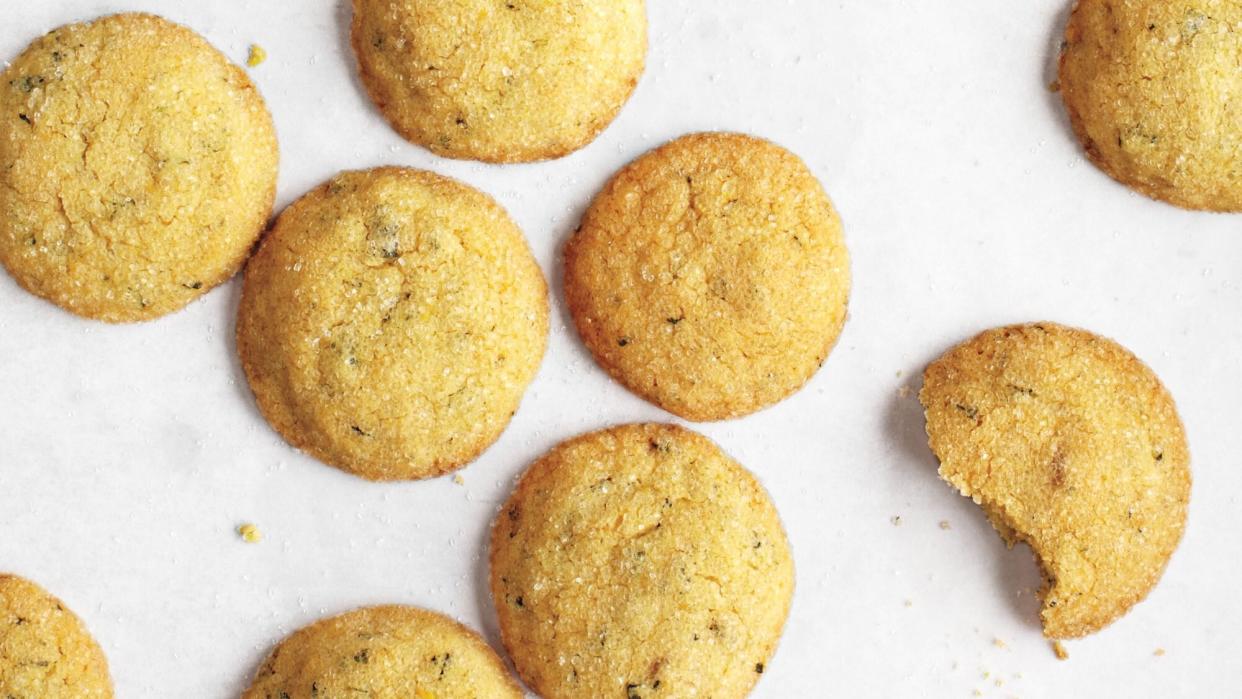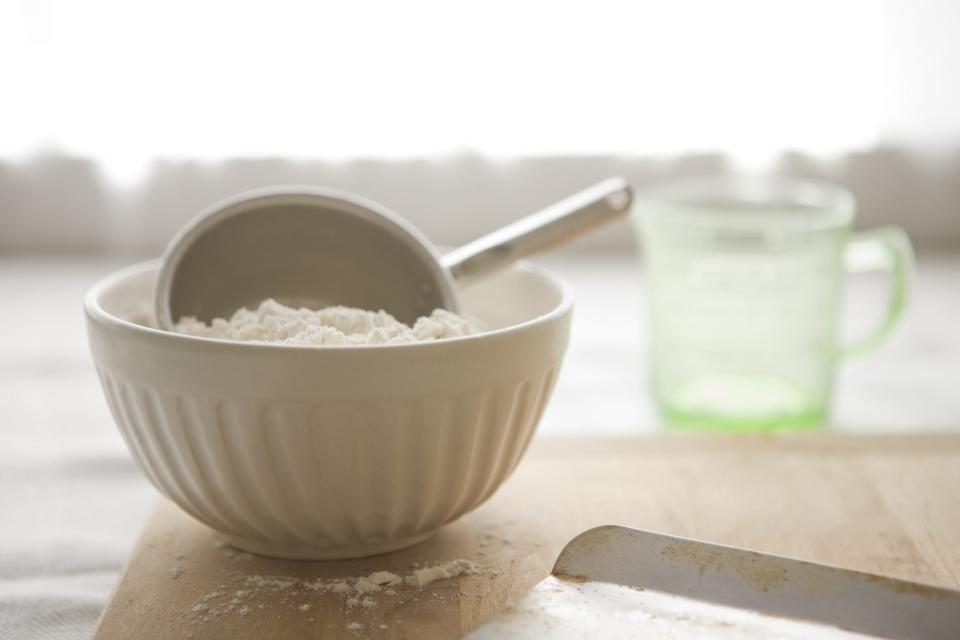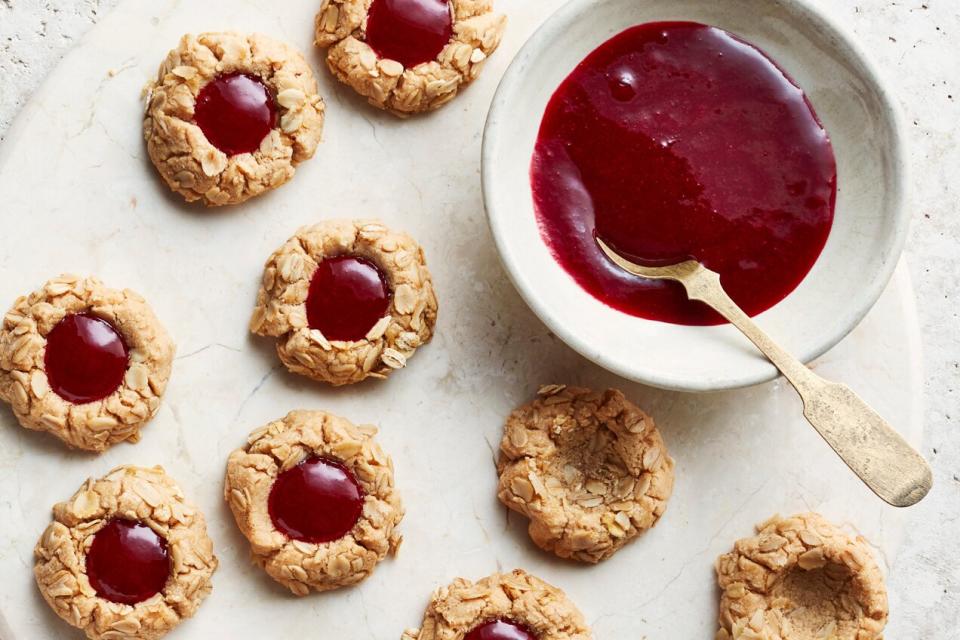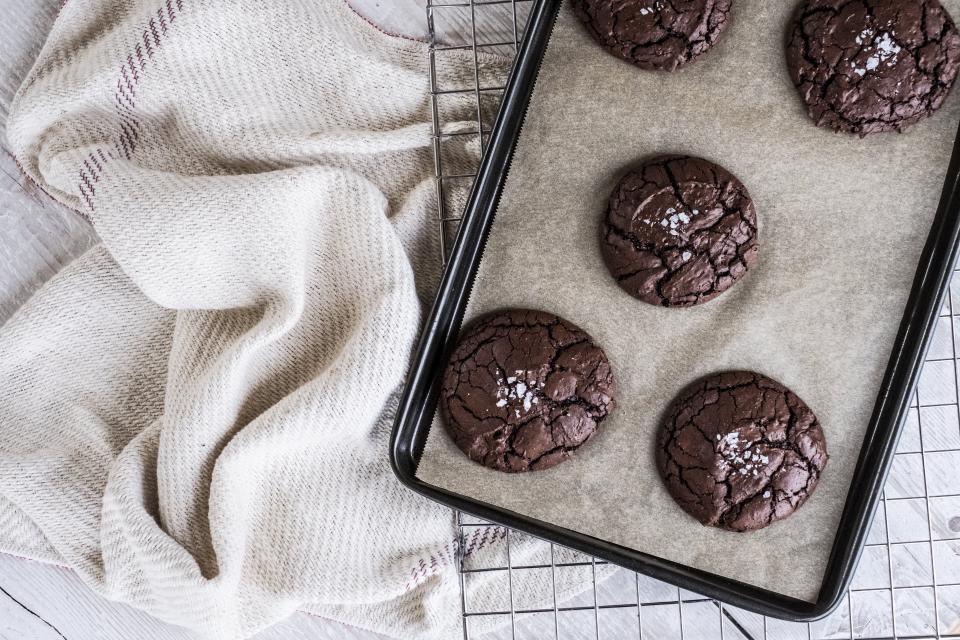The 10 Most Common Cookie-Baking Mistakes—and How to Avoid Them

Marcus Nilsson
It's always a perfect occasion for cookies. They're (relatively) easy to make, super portable, eminently shareable, and universally beloved. Chances are, cookies are one of the first things you learned to bake. But anyone who's ever made cookies has experienced the agony of treat defeat when a batch baked with the highest of hopes just doesn't hit the mark.
They could be dry or doughy, tough or crumbly, spread too thin (or hardly spread at all), entirely too sweet or bewilderingly bland, or burnt or underbaked. So many things can go a little bit—or a whole lot—wrong with a batch of these treats, leaving you to make the disheartening decision to either start over, buy dessert instead, or present them as is (and hope it's not as bad as you thought).
Cheer yourself up by remembering that mistakes are an essential part of the learning process. And now that you've done some things wrong, you're equipped to have a richer understanding of how to do them right. Here's our list of the most common cookie-baking mistakes: We explain why these errors occur and how to avoid them next time.
Related: Our Most Popular Cookie Recipes
Using the Wrong Butter
The fat in a cookie recipe plays a pivotal role in its flavor and texture—and the majority of cookie recipes call for butter (specifically, unsalted butter softened to room temperature). This is also one of the most common places for a batch of cookies to go wrong.
Use Standard Sticks
Unless the recipe specifically tells you otherwise, your butter should be the standard grocery store variety that comes in 4-ounce (1/2 cup or 8 tablespoons) sticks. It shouldn't be swapped for "light" butter or margarine or the spreadable kind in a tub. These have more water and less fat by volume than regular butter, and will result in disappointing cookies.
Butter Should Be Soft
Your recipe isn't kidding around: It really does call for softened butter—it shouldn't come directly from the fridge, nor should it be melted. Properly softened butter should still hold its shape, but be pliable enough for you to make an indentation without applying pressure. The easiest way to achieve this result is to plan ahead. Unwrap and measure the butter for your recipe, and set it in a bowl on the countertop for an hour or more (depending on how warm or chilly your kitchen is).
And if you need to speed the process along? Don't (we repeat: do not!) microwave the butter. Instead, dice the cold butter into small cubes, or grate it on the large holes of a box grater, and spread the bits out in a single layer on a plate.

Glasshouse Images / Getty Images
Combining All Ingredients at Once
It's tempting to save time and dirty dishes by just mixing all the ingredients together in one bowl. However, the step of creaming the butter and sugar (then mixing in eggs and any other liquids) is fundamental to perfect cookies, as is the separate step of mixing the leaveners, salt, and other dry ingredients evenly together before they ever touch the wet elements.
Substituting Ingredients on a Whim
Maybe you ran out of brown sugar, or perhaps you're trying to put a healthy spin on your baking by using more whole grains and fruit. There are all kinds of reasons why you might decide to substitute ingredients in a cookie recipe. While it's certainly possible to make substitutions and still get delicious results, it's risky if you don't have a firm grasp of baking science. The flours, sugars, fats, eggs, and leaveners all interact with each other in complex ways to affect the flavor, texture, and appearance of your baked goods.
If you're not in a gambling mood, it's better to switch recipes than ingredients. Seek out cookie recipes that incorporate the ingredients you want to use or have, rather than making swaps and hoping for the best.
Related: The 8 Best Egg Substitutes for Baking
Using Expired Ingredients
Every packaged food comes with an expiration date. None of these dates can ever be perfectly precise, and for some ingredients, the so-called best-by date isn't always important when the only consequence is that the flavor is just slightly diminished. For some baking ingredients, though, fresh versus stale makes all the difference between success and failure.
Heed Best-By Dates for Leaveners and Flour
Leaveners—that is, baking powder and baking soda (don't get them mixed up!)—eventually lose their ability to make your cookies rise. And flour can go stale, resulting in cookies that just don't taste right. It's easy to test your baking soda and baking powder in case you have doubts about their freshness. And when it comes to flour, give it a sniff: If it smells like Play-Doh, it's rancid, so it's time to start over with a fresh bag.

Lennart Weibull
Eyeballing Instead of Measuring Carefully
It's perfectly fine to wing it with some kinds of cooking, but baking is not one of them. Delectable results depend on the synergy of the chemical reactions between ingredients, and those reactions are based on the ingredients' proportions to one other. Being haphazard with one measurement can ultimately change the end results of a cookie recipe.
Use the Right Measuring Tools
Use liquid measuring cups for liquids and dry measuring cups for flour and other dry ingredients. And remember that flour should always be spooned into the measuring cup, not scooped. These rules aren't meant to scare you (after all, even imperfect cookies are usually tasty), but to remind you that precise measuring really does make a difference when it comes to baking.
Baking as Soon as the Dough Is Made
Drop cookies and rolled cookies almost always turn out better if you refrigerate the dough for at least 30 minutes before baking. This step controls the spread of the baking cookies and results in better flavor, too.

Mint Images / Getty Images
Using Different Cookie Sheets Interchangeably
There are cookie sheets, baking sheets, jelly roll pans, and half-sheet pans—some are stainless steel, aluminum, or insulated and others are light or dark (or thin or thick!). If you own a mix, they are likely jumbled together in your cabinet and you probably use them interchangeably. However, the construction and surface coating of a pan has a major effect on your baking results. For consistency, use one kind of sheet for your recipe and prepare it according to the instructions.
Prepare Cookie Sheets Correctly
In that vein, it's best to do exactly what the recipe says when it comes to prepping your baking pans. Some specify nonstick or insulated options, while others call for greased pans or ones lined with parchment paper. You could end up with impossibly stuck-on cookies if you skip over the fine print on this part. And if you're ever in doubt, line the baking sheet with parchment paper or a Silpat for a foolproof release.
Relying on the Recipe for Baking Time
Every oven is different, and the temperature on the dial is almost never precise—plus, your oven is almost certainly different than the one used by the person who developed the cookie recipe. Since it's common for the appliance's real temperature to vary 25 degrees or more from the display, buy an oven thermometer for greater precision.
Whether or not you use an oven thermometer, it's wise to set a timer for a couple minutes less than the shortest baking time suggested by the recipe. So, if your recipe says to "bake for 10 to 12 minutes," plan to peek at your cookies at the 8-minute mark. This will give you a clues to their doneness: Is there any browning at the edges? Have the centers flattened out and lost their sheen or do they still look wet and doughy?
Keep a close eye on the cookies after this point—preferably by turning on the oven light and peering through the door, rather than opening it and letting heat escape. By closely monitoring the first batch (or even better: a small test batch) you can settle on the perfect baking time for all your subsequent attempts.
Overcrowding the Oven
You'll get the most consistent results if you bake just one sheet of cookies at a time. If you're making a big batch and you need to double up for the sake of efficiency, note that the cookies on the top and bottom racks will bake at different rates. Check the cookies about two-thirds of the way through their baking time to rotate the pans, or move the top pan to the bottom rack and vice-versa, based on how done they look.
Stacking Cookies While They're Warm
Here's another instance where it just doesn't pay to rush: Cookies should always be cool before you stack them. Warm cookies will inevitably stick together and fall apart—which is such a crushing fate after all that work. Use a spatula to transfer cookies to cooling racks as soon as they come out of the oven, and only stack them after they're cool to the touch. For the best results, place a sheet of parchment or wax paper between each layer.
Now you know what not to do, put your new expertise to the test with a batch of your favorite cookies.

